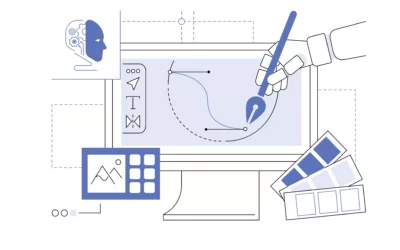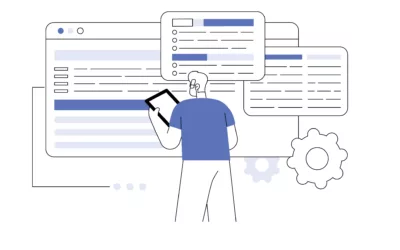Live chat is an essential tool for modern customer service, allowing businesses to assist customers quickly and efficiently. However, without proper training, agents may struggle to communicate clearly, respond promptly, or handle multiple conversations at once. That’s why live chat training exercises are crucial. They help agents develop the skills needed to deliver exceptional customer experiences. In this guide, we’ll explore practical exercises that enhance agent performance and improve overall service quality.
Why Live Chat Training Matters
Unlike phone support, live chat requires agents to multitask, type quickly, and express empathy using only text. Without sufficient training, agents might respond too slowly, misinterpret customer inquiries, or use an inappropriate tone. As a result, customer satisfaction can decline. Fortunately, the right training exercises can bridge these gaps and help agents communicate with confidence and professionalism.
Essential Live Chat Training Exercises
To maximize efficiency and improve customer interactions, call centers should incorporate the following training exercises into their programs.
1. Speed and Accuracy Drills
Fast and accurate typing is essential for live chat agents. Since customers expect instant responses, delays can lead to frustration.
Exercise:
- Set a timer and have agents type out common customer inquiries.
- Use online typing tests to measure words per minute (WPM).
- Challenge agents to type faster while keeping errors to a minimum.
By practicing regularly, agents can increase their typing speed without sacrificing accuracy, leading to smoother and quicker customer interactions.
2. Tone and Language Refinement
Because live chat lacks vocal tone and body language, agents must carefully choose their words to convey friendliness and professionalism. Otherwise, messages may come across as cold or unhelpful.
Exercise:
- Provide agents with real chat transcripts and ask them to analyze tone and clarity.
- Have them rewrite responses using a more positive and customer-friendly approach.
- Role-play different customer scenarios to reinforce effective communication techniques.
This exercise ensures agents develop a warm and engaging chat style, making interactions more pleasant for customers.
3. Multitasking Practice
In most call centers, agents handle multiple chat conversations at once. However, without proper multitasking skills, they may become overwhelmed and provide slow or incomplete responses.
Exercise:
- Simulate a live chat environment where agents manage two or more customer conversations at the same time.
- Gradually increase the number of chats to improve their ability to prioritize and respond efficiently.
- Emphasize time management strategies to prevent agents from feeling overloaded.
With continued practice, agents will become more comfortable managing several chats simultaneously without sacrificing service quality.
4. Handling Difficult Customers
Not every customer interaction will be easy. At times, agents must deal with frustrated or even angry customers. Therefore, they need training in de-escalation techniques to maintain professionalism.
Exercise:
- Present agents with challenging customer scenarios, such as complaints or refund requests.
- Have them craft responses that demonstrate empathy and problem-solving skills.
- Conduct group discussions to evaluate the most effective ways to calm difficult situations.
Through this training, agents will learn how to defuse tense interactions while keeping customers satisfied.
5. Product and System Knowledge Checks
Customers rely on live chat agents for accurate information. If an agent is unfamiliar with a product or company policy, they may provide incorrect answers, leading to confusion or frustration.
Exercise:
- Conduct regular quizzes to test agents’ knowledge of products, services, and company policies.
- Ask agents to find answers using internal resources or knowledge bases.
- Set up mock chats where trainers act as customers asking complex questions.
This approach ensures that agents have the knowledge and confidence needed to assist customers effectively.
6. Response Time Challenges
Customers expect live chat responses to be quick. If an agent takes too long to reply, customers may leave the chat or become dissatisfied.
Exercise:
- Measure how long agents take to respond to different types of inquiries.
- Set benchmarks for response times and encourage agents to meet them.
- Train agents to use pre-written templates while still personalizing their messages.
By refining their response times, agents can provide faster and more efficient service, ultimately improving customer satisfaction.
Best Practices for Live Chat Training
To make training even more effective, consider the following best practices:
- Use Real-Life Scenarios: Practical, hands-on exercises are more valuable than theory alone.
- Encourage Regular Feedback: Frequent coaching helps agents refine their skills.
- Leverage AI and Chatbots: Automated tools can assist with training simulations.
- Monitor Performance Continuously: Regular assessments ensure ongoing improvement.
By implementing these strategies, call centers can build a team of highly skilled live chat agents who are well-prepared for any customer interaction.
Final Thoughts
Effective live chat training exercises help agents enhance their speed, accuracy, and communication skills. With the right training methods, businesses can improve customer service efficiency and increase satisfaction. Investing in proper training ensures that agents are well-equipped to handle any situation, ultimately creating a better experience for both customers and companies.
Contact Us
Are you ready to improve your call center’s live chat support? Our expert training solutions can help! Contact us today to learn how we can enhance your team’s performance.



